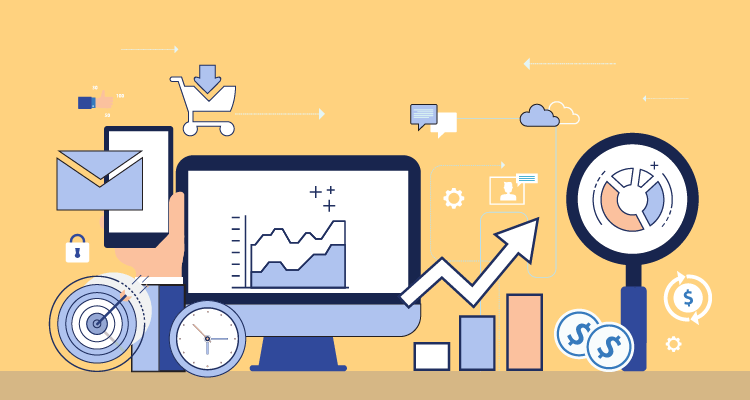Modernization for the MRP Buyer with ES2P and Cordis Solutions
The phenomenon of BYOD (bring your own device) only really began with the maturity of the modern smartphone – notably the launch of the Apple App Store for iOS – and the launch of the original iPad, back in 2010.
It was then that users began to expect and accept specific ways of connecting with their apps, manipulating data, posting information, sharing socially and other interactions. A prominent example of this specificity is the cog logo – ubiquitous in nearly every app under the sun. Everyone knows what it means, and what is expected after it’s clicked or tapped.
Microsoft, Google, and Apple – the primary OS manufacturers in the workplace – each more or less adhere to accepted norms of what’s become known as UX (user experience). So any app used in the enterprise is regarded with some confusion if it works in a very different way from what has become the lingua franca.
Massive ERP and MRP systems which have evolved since the halcyon days (!) of Windows 3 or Mac OS 7 present two problems, then, to the modern user. First, their interface syntax is sometimes not what has come to be expected, especially for a new generation of users. Second, these systems are often monolithic; after all, they’re used to run every aspect of the enterprise, from supply chain management to finance. Their very size means users sometimes need to be trained, or at least, guided through the byzantine routes required to achieve specific tasks.
For instance, for an end-user to enter an occasional expense and have it approved, or the finance department to quickly raise an invoice, users have to fire up the ERP, navigate through to the correct layer of the application, and enter data in a format determined by the app interface in question.
While this situation was not problematic just a few years ago, user expectations of the utility of applications have changed. In short, UX has moved on, and the larger the MRP/ERP, the slower the developers are to adopt more familiar syntax.
There are literally hundreds of home finance-oriented apps for mobile devices which allow the quick scanning of receipts or parking stubs, for instance, and the user’s financial situation can be updated via the cloud within seconds.
So it’s not expecting the earth, one would think, that such interactions with workplace software could be undertaken likewise. But sometimes, the ERP/MRP’s stipulations mean this simplicity of interaction is not possible.

It’s into this market that suppliers such as Cordis Solutions and ExceleratedS2P appear. The partnered companies specialize in providing that usability layer between the power of the monolithic back office systems and the end-user. Users today are more suited to tapping and swiping, or flicking through an Office application, than navigating through to a SharePoint node via a VPN, or finding where in SAP to enter cash expenses and assign sums to the dreaded unregistered vendor.
One app, myInvoiceScan from ExceleratedS2P, is a prime example, allowing staff to capture expenses invoices or receipts via their mobile and push data to the cloud via a data network (cell or Wi-Fi). The app is designed for Ariba and OpenText VIM users but also integrates with many other common invoice processing platforms – all with no ERP licensing overhead.
On a larger scale, Cordis Solutions’s software allows steel multinational ArcelorMittal’s staff to use an interactive Excel application with SAP to post multiple finance documents into SAP, allowing the business to make significant productivity gains. Similar improvements were made for a global bakery company with a turnover of US$3 billion. Cordis provides full approval management for SAP SRM and Ariba ensuring the viability of a billion dollar procurement process.
Procurement in all industries is a prime contender for modernization. Moves toward purely mobile procurement apps have been somewhat slower than in other areas of the enterprise, and not because procurement professionals are in some way less technologically well-versed than others.
Apps do exist, of course, ranging from Oracle’s Procurement for EBS (E-Business Suite) down to a single retailer’s parts-ordering app. In between, there are apps for the new procurement systems devised by start-ups. Apps tied to specific hosts are nothing new, but what about procurement systems which integrate and extend the functionality of the granddaddy of the ERP, Germany’s mighty SAP?
The complexity of modern supply chains means there hasn’t been a simple-to-use, widely recognized interface solution which can fully encompass the full range of activities which a buyer needs to undertake – sourcing, contract negotiation, term management, inter-office communications, receiving systems and payment solutions, and so forth.
That is, until now. Buyers WorkBench Application (BWA) is a solution which offers state-of-the-art functionality to the professional buyer via familiar platforms – either a browser or Microsoft Office. BWA integrates fully with SAP via a RESTful API (OData Services) and is fully approved by the ERP giant so that procurement processes can be carried out more quickly and efficiently, with massive benefits for buyers and suppliers alike.

BWA is user-friendly, easy to use, utilizes all the GUI cues and prompts with which an Office user is familiar. This is not SAP-on-a-different-screen, rather it’s a complete buyer’s solution for operations and reporting functions – one that interfaces seamlessly with back-office SAP functions.
Each aspect of procurement can be undertaken; buyers and managers can monitor progress, balance work and make educated decisions as well as communicate with other buyers and branch offices.
Users can see and update information on the application and prioritize all assigned requisitions according to company guidelines, making it simple to identify which items should be addressed first. Buyers may also update strategic data in requisitions and track the sourcing process. The application can be used to create Purchase Orders and Requests for Quotation either for a single instance or in the many hundreds.
Even buyers who receive thousands of requests via (for instance) an MRP system can manage workflows. Buyers Workbench takes procurement professionals out of the back office and into the field, where decisions can be made more quickly, in reaction to new offers, changes in terms, or fresh information coming in.
Cordis’s solutions are positioned right across the enterprise as a natural bridge between users and the necessary complexity of technologies. The company allowed electronics giant NVIDIA to regain control over its difficulties entering data into SAP by providing a user-friendly, widely acceptable framework – in that particular instance, an Excel-based application: “[It] provided us with an easy to use solution to address our core financial issues, providing Excel for data entry through SAP Gateway for Microsoft rather than native SAP allowed us to retain control but added functionality: this was the game changer,” said Malik Fayyaz, Corporate Finance.
In embracing digital transformation, no part of the enterprise should be left behind. With Cordis’s and ExceleratedS2P’s latest offerings, supply chain professionals and everyday business users across the enterprise can maintain the competitive edge they need to stay one step ahead of the competition – all within the overarching structure of SAP, or your ERP of choice.
Get in touch with Cordis Solutions to learn more about how these offerings have impacted the working day of buyers right across the globe.
“[…] It’s a small tool that will positively affect all our buyers every day and allow us to focus on the right things.” – Key project member at BAE, Europe’s leading airplane engineering companies.
Cordis Solutions is presenting a series of webinars you can join to learn more about how these offerings can optimize your organization’s use of your chosen ERP:
- Modernisation for Direct Spend, 13 June 2018: Learn about how your procurement and buying activities can be empowered to respond more quickly, make decisions more accurately and create better results.
- Improve Period End with Excel and SAP, 11 July 2018: Make essential data entry into and extrapolation from SAP simple procedure which will consume less valuable resources.
- Master Data and Approval Made Simple, 27 September 2018: How Cordis can help you to amend and add to SAP’s core Master Data in a trouble-free, safe manner, and approve expenses and requests from your mobile.









